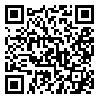Tue, Jul 1, 2025
[Archive]
Volume 38, Issue 1 (1-2024)
Med J Islam Repub Iran 2024 |
Back to browse issues page
Download citation:
BibTeX | RIS | EndNote | Medlars | ProCite | Reference Manager | RefWorks
Send citation to:



BibTeX | RIS | EndNote | Medlars | ProCite | Reference Manager | RefWorks
Send citation to:
Rasekhian M, Haji S, Shahabi M, Barry A, Hashemi A, Ghasemi M et al . Comparing the Impact of TBL Versus Lecture Method on Pharmacy Students' Academic Self-efficacy in a Pharmaceutical Biotechnology Course: A Quasi-Experimental Study. Med J Islam Repub Iran 2024; 38 (1) :372-377
URL: http://mjiri.iums.ac.ir/article-1-9038-en.html
URL: http://mjiri.iums.ac.ir/article-1-9038-en.html
Mahsa Rasekhian 

 , Sadra Haji
, Sadra Haji 

 , Maryam Shahabi
, Maryam Shahabi 

 , Azizeh Barry
, Azizeh Barry 

 , Akram Hashemi
, Akram Hashemi 

 , Mahdiyeh Ghasemi
, Mahdiyeh Ghasemi 

 , Ghobad Ramezani
, Ghobad Ramezani 




 , Sadra Haji
, Sadra Haji 

 , Maryam Shahabi
, Maryam Shahabi 

 , Azizeh Barry
, Azizeh Barry 

 , Akram Hashemi
, Akram Hashemi 

 , Mahdiyeh Ghasemi
, Mahdiyeh Ghasemi 

 , Ghobad Ramezani
, Ghobad Ramezani 


Education Development Center, Kermanshah University of Medical Sciences, Kermanshah, Iran , ramazani.g@iums.ac.ir
Abstract: (1688 Views)
Background: Students with higher academic self-efficacy usually show higher levels of academic adaptation and are agile in using variant learning strategies. In this regard, training-based learning (TBL), a relatively new educational method, can be considered a complementary method in the education of pharmacy students.
This research aims to compare the effect of TBL with the lecture method on the academic self-efficacy of pharmacy students in pharmaceutical biotechnology courses.
Methods: This was a quasi-experimental study of pretest and posttest types with random assignment to 2 control and experimental groups, in which the effects of team-based training and lecture methods were studied in the pharmaceutical biotechnology course. In the experimental group, the students were divided into 8 groups of 6 people, and they spent 5 sessions of the pharmaceutical biotechnology course with the TBL method, and the control group also received the same content by the lecture method. Both groups answered the self-efficacy tool before the intervention, and at the end of the intervention, both groups answered the tool again. After the approval of the university ethics committee and obtaining informed consent, the self-efficacy questionnaire was distributed in person and online among the participants. The quantitative data were collected and analyzed using SPSS software Version 19 (mean and standard deviation, homogeneity of the 2 groups, tests, and Kolmogorov-Smirnov).
Results: The data analysis showed that most of the participants were 22 years old. The independent samples t test results showed that the 2 groups did not have a statistically significant difference in the mean age (P = 0.058). Also, there was no statistically significant difference between the 2 groups in the pretest (P = 0.391), and the 2 groups had almost the same mean. Still, there was a statistically significant difference between the 2 groups in the academic self-efficacy variable in the posttest (P < 0.001).
Conclusion: Team-based teaching methods can increase students' participation and enthusiasm in learning and applying self-efficacy and self-management skills, introducing more diverse career and educational opportunities for pharmacy students.
This research aims to compare the effect of TBL with the lecture method on the academic self-efficacy of pharmacy students in pharmaceutical biotechnology courses.
Methods: This was a quasi-experimental study of pretest and posttest types with random assignment to 2 control and experimental groups, in which the effects of team-based training and lecture methods were studied in the pharmaceutical biotechnology course. In the experimental group, the students were divided into 8 groups of 6 people, and they spent 5 sessions of the pharmaceutical biotechnology course with the TBL method, and the control group also received the same content by the lecture method. Both groups answered the self-efficacy tool before the intervention, and at the end of the intervention, both groups answered the tool again. After the approval of the university ethics committee and obtaining informed consent, the self-efficacy questionnaire was distributed in person and online among the participants. The quantitative data were collected and analyzed using SPSS software Version 19 (mean and standard deviation, homogeneity of the 2 groups, tests, and Kolmogorov-Smirnov).
Results: The data analysis showed that most of the participants were 22 years old. The independent samples t test results showed that the 2 groups did not have a statistically significant difference in the mean age (P = 0.058). Also, there was no statistically significant difference between the 2 groups in the pretest (P = 0.391), and the 2 groups had almost the same mean. Still, there was a statistically significant difference between the 2 groups in the academic self-efficacy variable in the posttest (P < 0.001).
Conclusion: Team-based teaching methods can increase students' participation and enthusiasm in learning and applying self-efficacy and self-management skills, introducing more diverse career and educational opportunities for pharmacy students.
Type of Study: Original Research |
Subject:
Medical Education
Send email to the article author
| Rights and permissions | |
 |
This work is licensed under a Creative Commons Attribution-NonCommercial 4.0 International License. |





